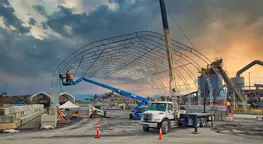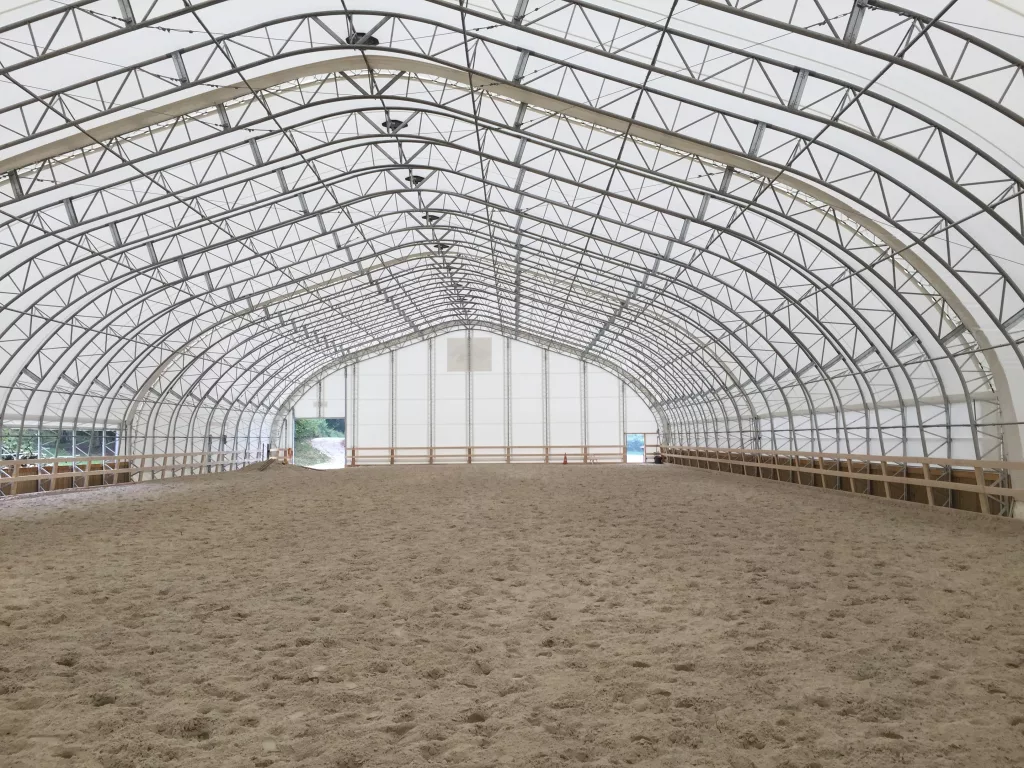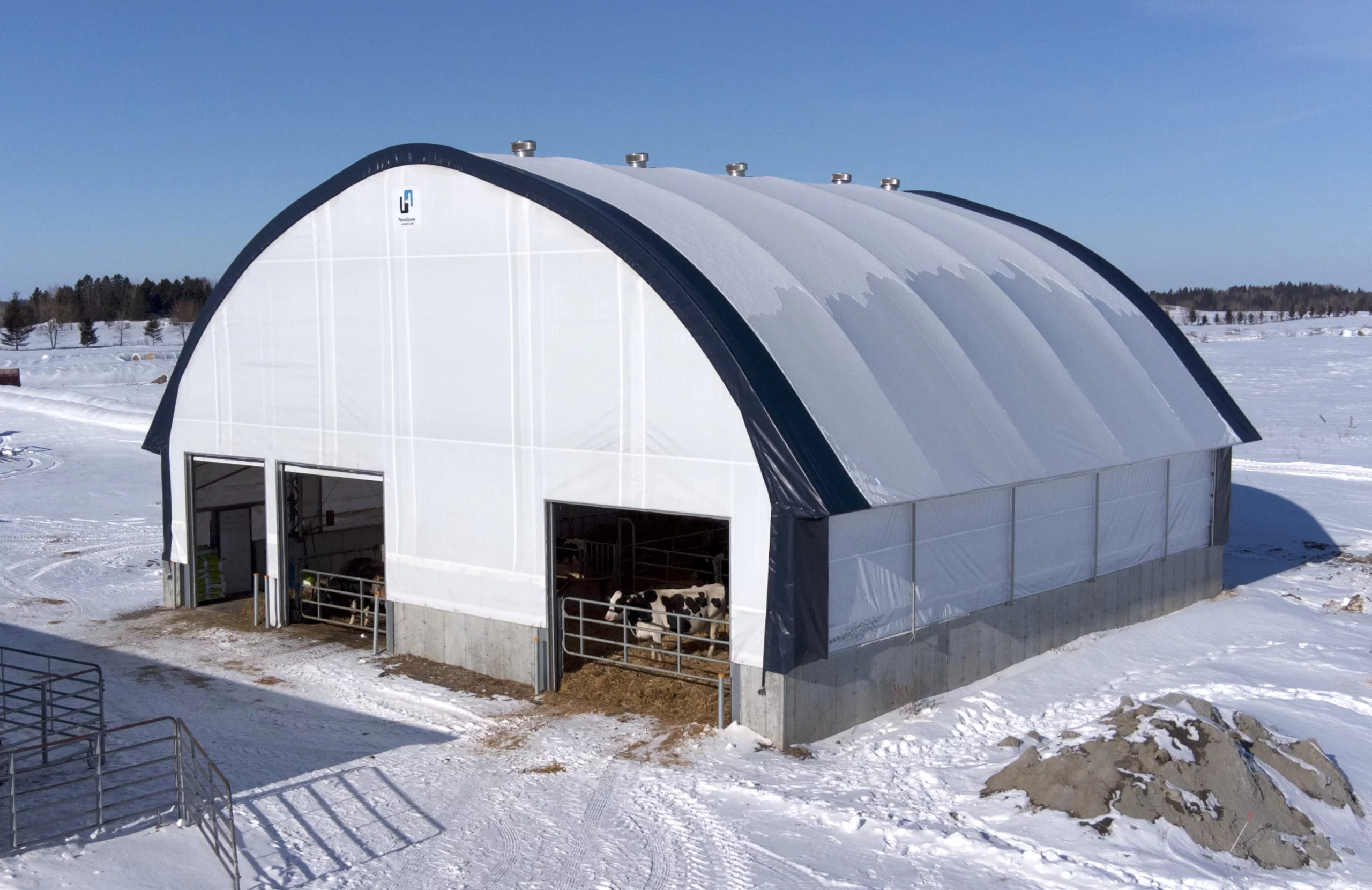Fabric buildings are known for their durability and cost-effectiveness. They offer a versatile solution for various applications, from agricultural storage to municipal depots and sports facilities. These structures are designed to be both practical and efficient, providing large clear-span interiors, excellent natural light, and fast installation timelines.
But how long do these structures actually last? What factors influence a typical fabric building lifespan?
In this article, we delve into the expected lifespan of fabric buildings. We explore the key factors that affect their longevity, how to maintain them over the years, and what you can do to maximize their durability.
Whether you’re considering investing in a fabric building or already own one, this guide will provide valuable insights. Stay tuned to learn more about the longevity of fabric-covered buildings and how to protect your investment..
Understanding Fabric Building Lifespan
The lifespan of fabric-covered buildings can vary greatly depending on the quality of materials and how the structure is maintained. On average, these buildings can last anywhere from 15 to 30 years or more.
This range is influenced by several critical factors, such as material composition, local environmental conditions, usage patterns, and the level of care provided throughout the structure’s life cycle.
Fabric buildings typically consist of two main components:
- Steel Frame – Usually made from hot-dip galvanized structural steel that resists corrosion and can last 30–50 years with minimal maintenance.
- Fabric Membrane – Made from polyethylene or PVC-coated fabric. The membrane typically lasts 15–25 years, depending on quality, UV exposure, and regional climate.
With a well-maintained frame, the fabric cover can be replaced when necessary, extending the overall building life well beyond the original cover’s service duration.

Key Factors Influencing Fabric Building Lifespan
The fabric building lifespan is not a fixed number. Instead, it’s shaped by several interrelated factors that either enhance or shorten the useful life of the structure. Let’s explore these key influences:
1. Material Quality
The type of fabric used in the building’s construction plays a significant role in durability. High-quality, UV-resistant fabric membranes with protective coatings are more resistant to tearing, fading, and weathering.
Polyethylene is common in agriculture and temporary applications, while PVC-coated fabric is often chosen for long-term industrial or municipal use due to its higher resistance to wear and exposure.
2. Steel Structure
The steel frame is the backbone of any fabric building. Galvanized steel resists corrosion and performs well under snow and wind loads when engineered to meet site-specific codes. The frame’s lifespan typically exceeds the fabric membrane’s, making it a long-term investment.
3. Installation Quality
Proper installation is crucial to the structural integrity of a fabric building. Misaligned tension, inadequate anchoring, or frame misassembly can lead to premature wear and reduce wind/snow resistance. Working with certified or experienced installers is key.
4. Ongoing Maintenance
Routine inspections and cleaning help catch small issues before they become costly repairs. This includes:
- Checking fabric tension and anchoring systems
- Cleaning the membrane to remove debris, bird droppings, or mold
- Inspecting the frame for signs of rust or structural stress
Regular maintenance can extend the building’s life by 5–10 years or more.
Maintenance: The Lifeline of Fabric Covered Buildings
Maintenance is perhaps the most important and cost-effective method of protecting your fabric building investment.
Here are essential maintenance tips:
- Inspect fabric tension every season to prevent sagging or wind damage.
- Clean the fabric membrane at least once a year to remove grime, salt, or mildew, especially in coastal or agricultural environments.
- Check frame bolts and connections to ensure structural integrity.
- Patch small tears immediately using manufacturer-approved repair tape or kits.
With consistent upkeep, your building can exceed its expected lifespan—especially if the steel frame remains structurally sound and fabric replacements are handled proactively.
The Role of Environmental Conditions on Fabric Buildings
Environmental factors significantly impact the fabric building lifespan, especially in regions with severe climate variations.
Here’s how different conditions affect longevity:
- Snow & Ice Loads – Accumulated snow adds stress to the fabric and frame. MegaDome and similar buildings are engineered with regional snow loads in mind, but snow removal should still be part of winter maintenance.
- UV Exposure – High sunlight exposure can degrade fabric more quickly. Opting for UV-treated membranes helps mitigate this.
- Wind – In areas with high wind, properly tensioned fabric and engineered anchoring systems are critical. Poorly anchored buildings are more susceptible to wear or even collapse.
Buildings designed specifically for regional climate conditions will have a significantly longer service life than generic or non-engineered options.
Enhancing the Lifespan of Your Fabric Storage Building
Extending the fabric building lifespan isn’t just about avoiding damage—it’s about proactive care and smart upgrades.
Here are ways to add years to your structure:
- Choose the right building for your use case – Agricultural buildings have different demands than industrial ones. Choose fabric thickness, frame design, and ventilation based on actual needs.
- Plan for replacement fabric – The steel frame will likely outlast the first membrane. Planning for a future fabric replacement is both cost-effective and sustainable.
- Install proper ventilation – Especially for equipment or livestock storage, ventilation helps regulate temperature and reduce fabric stress from condensation and humidity.
- Consider retrofits – Add new fabric, reinforcements, or updated endwalls to older structures to extend usability.
Many farm, industrial, or equestrian fabric buildings see fabric replacements after 15–20 years, while their frames remain functional for 30+ years.

Conclusion: Maximizing Your Fabric Building Lifespan
In conclusion, fabric buildings offer a long service life when designed correctly, installed properly, and maintained regularly. With high-quality materials and proper care, these structures can last 20 to 30 years or more—making them an excellent investment for agricultural, commercial, or municipal use.
Understanding what impacts a fabric building lifespan gives you the power to plan, maintain, and maximize your investment. Whether you’re looking to shelter equipment, cover a riding arena, or protect raw materials, a fabric-covered structure offers flexibility, durability, and long-term value.

